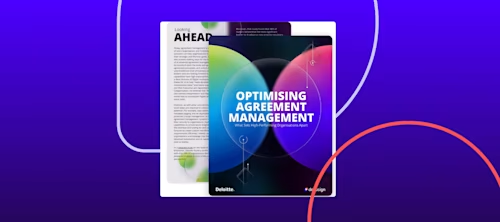
Docusign IAM can have a huge impact on the end-to-end agreement process in healthcare and life sciences. Find out more about how it could enhance processes in your organisation.

5 benefits of Intelligent Agreement Management for the healthcare and life sciences industry
By Nathan Steiner, Senior Director, Solutions Consulting, APJ
From clinical trials to patient consent, there are an endless array of agreements and contracts circulating in the healthcare and life sciences industry. It’s a space bound by extremely tight rules and regulations, which puts the onus on companies operating within the industry to take good care of all these agreements.
Today, I want to look at five ways in which Docusign Intelligent Agreement Management (IAM) helps reduce the operational load, improve the patient experience, and ensure compliance with the strictest regulations.
1. Compliance comes first
For any healthcare or life sciences company thinking about how to digitise existing processes, compliance is likely to be the top concern. How can you make sure that any new processes you implement will continue to comply with regulatory requirements? How do you stay on top of the latest rules around data privacy, protection and its use when taking patient data to the cloud?
These are valid questions. But the fact is, digitising your agreement processes will actually strengthen your ability to stay compliant. Docusign IAM provides robust audit trails, version control, electronic signatures, and verified certificates of completion (CoC) — all of which are critical for things like CFR Part 11 and ISO/IEC 27001 compliance. Any changes to agreements are tracked, time-stamped, and attributed to specific users; and standardised workflows and approval processes can be easily enforced, minimising the risk of deviations from regulatory requirements.
In clinical trials, for example, Docusign IAM could automate the inclusion of data privacy clauses such as HIPAA, Privacy Act, PDPA, and PDPO. It can also capture informed consent. Or, when managing patient data, it can ensure that data sharing agreements with third parties like hospitals or clinicians are compliant with relevant regulations — thereby reducing the risk of data breaches, unauthorised data sharing, its use, and associated legal penalties.
2. Security is assured
Security is another important piece of the agreement puzzle. And, again, Docusign IAM shines here. Designed to comply with data security standards like HIPAA, ISO 27001, eIDAS, FedRamp and many more, it includes a rich array of features to protect patient records. For example, role-based access controls ensure that only authorised personnel can access sensitive data. Encryption protects data in transit and at rest. And audit trails track all user activity, providing a record of who accessed what data and when, while enabling the quick identification of any irregular or non-compliant activity.
3. Patients get a better experience
When it comes to things like onboarding and patient consent, a digital process has the added benefit of improving the patient experience. Docusign IAM — which automates the process of collecting, storing, and managing consent — streamlines and accelerates the process for all involved. Patients can review and sign forms electronically, and the system automatically stores and indexes them for easy retrieval, while also synchronising agreement data back into the required core systems of record.
4. Reduced administrative load
Docusign IAM automates many administrative tasks related to agreement management, such as contract drafting, reviews, approvals, and renewals. A centralised repository for all contracts makes it easy to track contract status, deadlines, and obligations. Automated workflows streamline the approval process, reducing delays and errors.
This reduces the time healthcare workers and administrative staff need to spend on manual paperwork, data entry, and tracking of agreement status — ultimately giving healthcare professionals more time to focus on patient care and other critical tasks.
5. Seamless integration with existing systems
Last but certainly not least, Docusign IAM integrates with electronic health records (EHRs) and patient management platforms like Epic, Cerner, Siemens, McKessons, and more. APIs make integration easy, allowing for seamless data exchange and workflow automation. For example, patient data from an EHR can be automatically populated into consent forms within Docusign IAM; while integration with patient management platforms can streamline appointment scheduling and patient communication.
Want to know more?
As the above benefits show, Docusign IAM can have a huge impact on the end-to-end agreement process in healthcare and life sciences. To find out more about how it could enhance processes in your organisation, I encourage you to reach out for a demo.
Docusign IAM is the agreement platform your business needs


